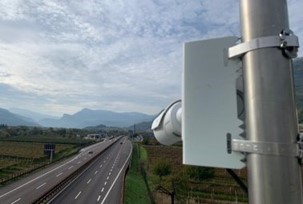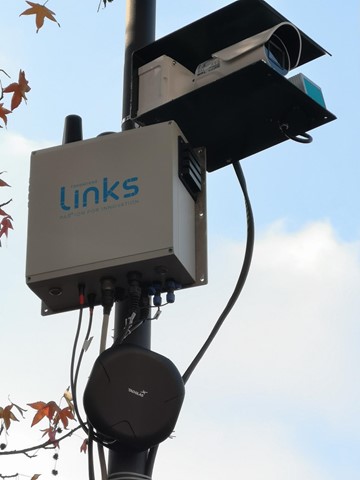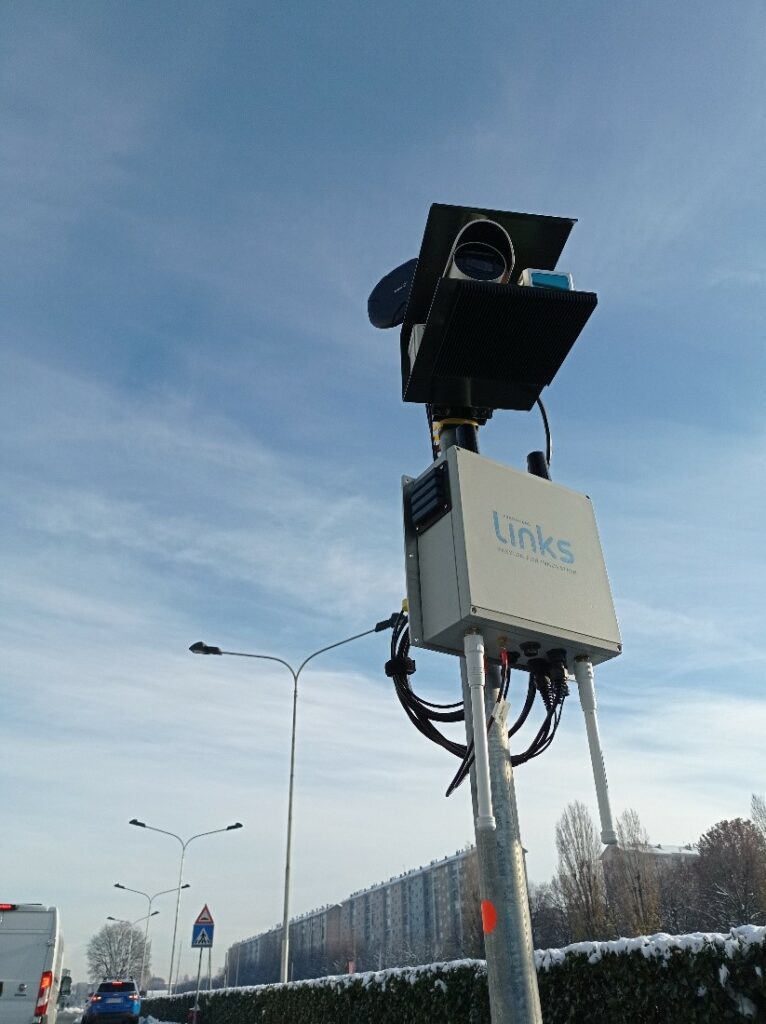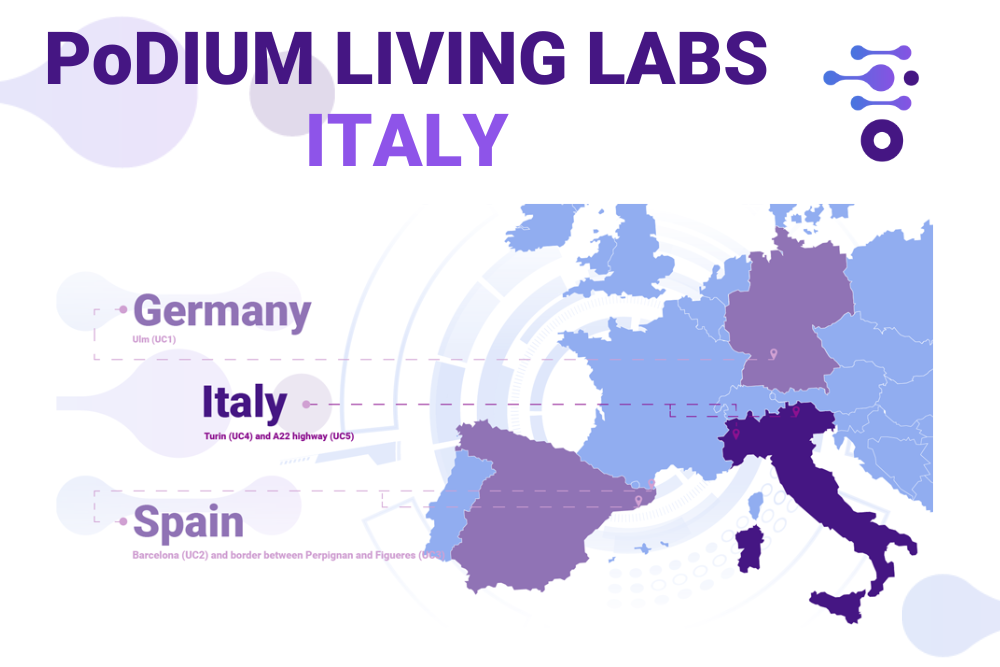Discover the activities that will be carried out in the Italian Living Lab of PoDIUM in this last article of the ‘Inside PoDIUM’s Living Labs’ series. Two use cases will be demonstrated in Italy to boost the development of Connected, Cooperative and Automated Mobility (CCAM) services, with a particular emphasis on enhancing safety at intersections and in a highway tunnel.
Using reliable data to enhance safety at intersections
The first use case that will be demonstrated in the Living Lab, ‘Trusted Cooperative Perception for Intersection Manoeuvre Assistance’, will focus on vulnerable road user protection at crossroads. The Living Lab is located in the city of Turin and is equipped with road sensors and equipment for traffic management such as traffic lights and existing C-ITS infrastructure.
The objective of this use case is to demonstrate that the digital infrastructure can provide the necessary information to an autonomous vehicle to allow it to navigate busy intersections in cities while protecting vulnerable road users, such as pedestrians and bicyclists. The major focus point of the use case is the high reliability of data thanks to a smart redundant approach and the authentication of software across all nodes (e.g. vehicles, road side units, etc.). A digital twin will also be used to facilitate the efficient management of several lanes, directions, and road users, using precise and trusted information from diverse sources, including the infrastructure, vehicle sensors, and traffic lights, to assist vehicles, pedestrians, and cyclists at the intersection.
The use case will contribute to improving the safety between connected road users at an intersection and will analyse the impact of digital twins on the provision of CCAM services. Digital twins are expected to revolutionise the use of CCAM services and road infrastructure data for safety purposes by using a considerable amount of real-time data produced by the interaction of road users to provide specific responses, such as warnings to users in the event of incidents.
“The use case demonstrates that highly reliable information can be provided to road users to improve their safety and security awareness, using advanced network connectivity on vehicles and especially focusing on vulnerable road users. Autonomous vehicles can exploit these technological resources to interact with normal traffic and be safely introduced in the future in urban environments. Moreover, this use case expressly addresses the needed trust between vehicles and the infrastructure that is the base for an effective exchange of information.”
Filippo Visintainer, Stellantis-CRF
Managing the risk of incidents in tunnels through precise localisation
Titled ‘Risk Management in a Highway Tunnel’, the second use of the Living Lab will take place along the A22 highway in Trento, between the ‘Trento Nord’ and ‘Trento Sud’ toll stations. The tunnel close to the city will be used to showcase vehicle-infrastructure cooperation for improved emergency management and to implement advanced improvements to safety monitoring in a highway tunnel.
In locations where satellite signal is unavailable, two innovative localisation techniques will be used to ensure the precise localisation of vehicles inside the tunnel. The tunnel will be monitored by camera sensors that detect incoming and outgoing vehicles, providing a constantly updated risk assessment. This information will be made available to the incoming vehicles and will offer warning and manoeuvre advice to drivers, while assisted (SAE level 1-2) and automated functions (SAE level 3-4) can benefit from detailed information about the allowed level of automation, as well as the operational limits (e.g. in terms of lanes or manoeuvres) in the specific area of the tunnel.
The use case will demonstrate the continuity of CCAM services throughout the corridor by covering tunnel scenarios. The position of the vehicle as well as the satellite (GPS) time reference are paramount for cooperative systems to be operational but are severely impaired when the vehicle is not in open sky conditions.
“The use case shows that the security of a critical highway segment can be managed by centralising and improving the information and its processing. Innovative networking resources such as network edge servers and physical infrastructure make this information available. Thanks to the centralisation of digital risk management of tunnels, this can help the adoption of this paradigm to monitor other critical management domains; moreover, autonomous vehicles are also integrated in the highway traffic and drivers of other connected vehicles will increase their awareness of their safety when travelling. Finally, an innovative solution for the precise localisation of vehicles in GNSS-impaired environments (tunnel) will be tested with a positive impact on the safety of automated vehicles.”
Filippo Visintainer, Stellantis-CRF
Partners involved in the Italian Living Lab
A number of project partners are involved in the activities of the Living Lab to ensure its success. Autostrada del Brennero will provide the infrastructure where the tunnel use case will take place, the ‘Piedicastello’ tunnel next to Trento, and the system used to generate the synthetic GNSS signal integrating the GNSS signal provided by the satellite receiver of vehicles, which will give an accurate localisation of vehicles. The entire C-ITS infrastructure will also be provided by Autostrada del Brennero. Stellantis-CRF will provide three vehicle prototypes for the Living Lab, all equipped with onboard sensors and vehicle-to-everything communication to increase awareness through collective perception (sensor sharing), allowing for preventive safety warnings and advice. LINKS acts as the Living Lab leader, coordinating the partners’ contributions and organising the timeline of activities. In the two use cases, LINKS will provide the camera sensors on the roadside and the onboard units for the vehicles in the Turin use case, and the so-called trust platform used to allow vehicles to be authenticated into the vehicular communications to avoid security threats or unauthorised actions. LINKS will also provide the data flow software components to support the applications on the network edge. SWARCO Italia will use communication technologies for the exchange of information between the connected and automated vehicles and the road infrastructure sensors in the Turin use case. This will be used to warn users of the potential risk of collision. TIM, as operator of telecommunication services, will provide access to its commercial 5G functionalities in the Turin use case.




